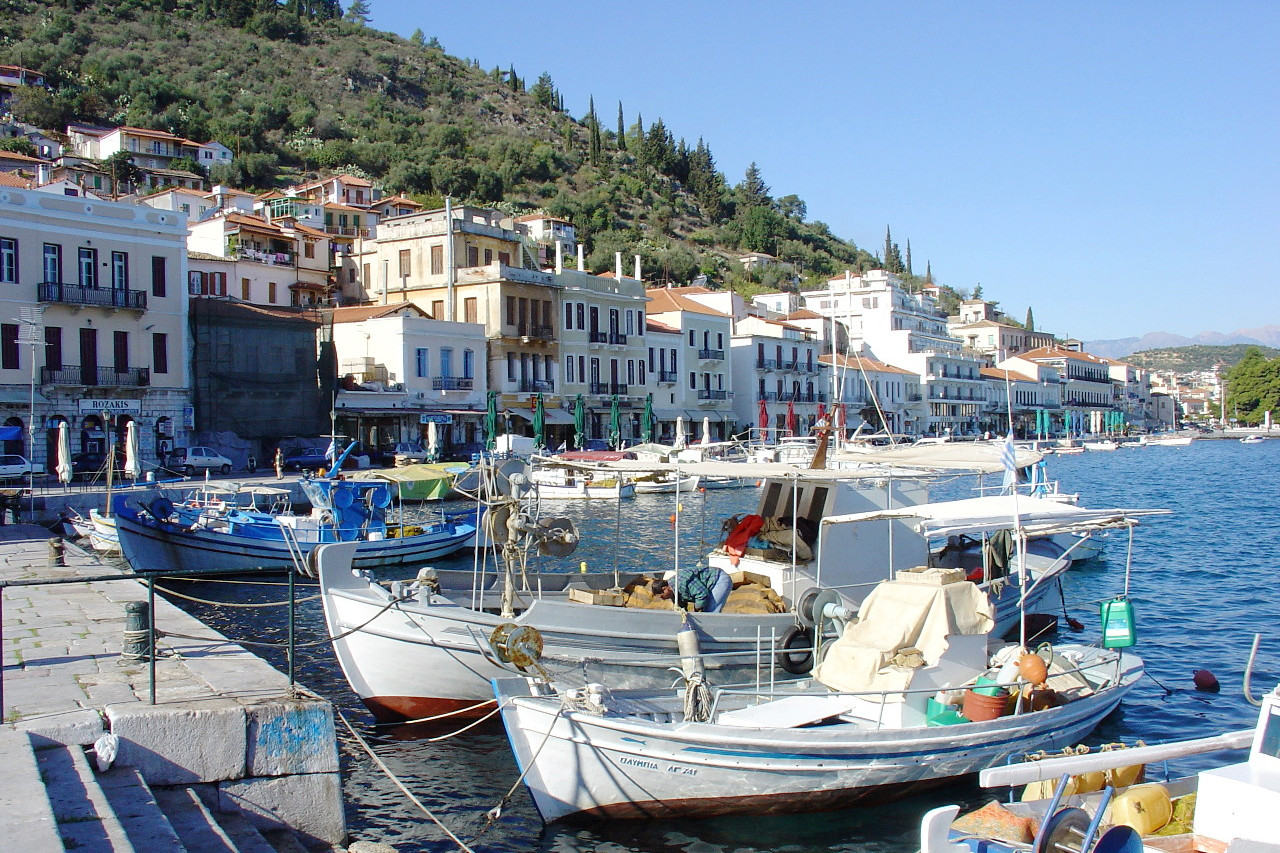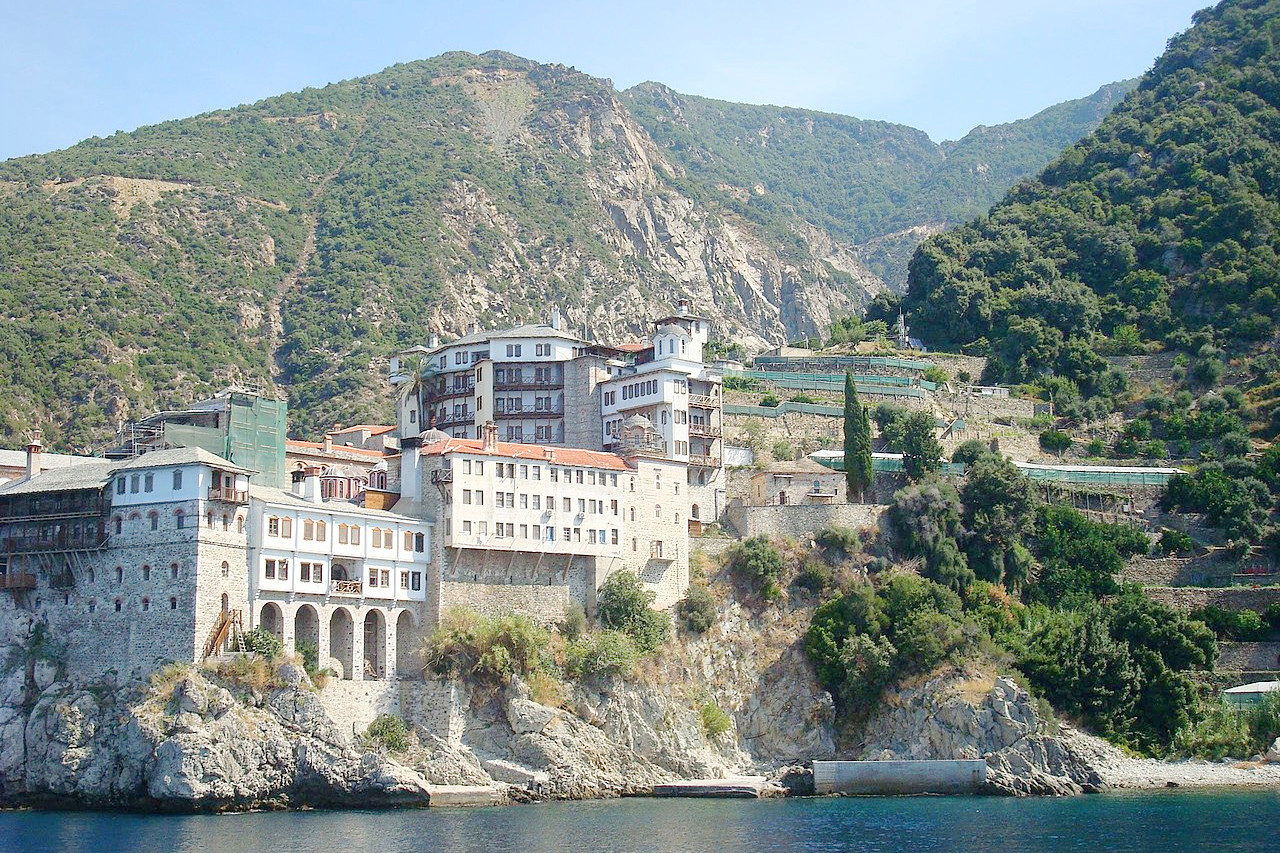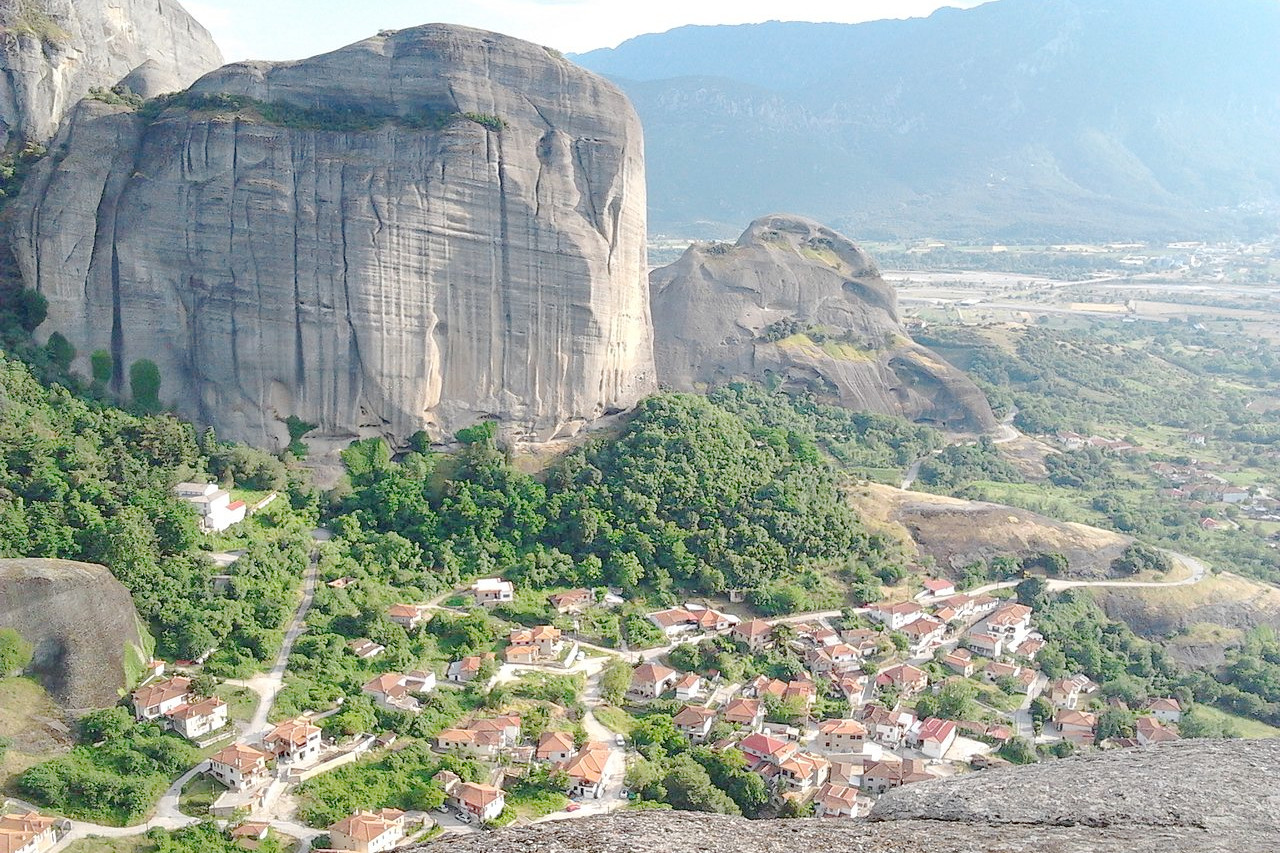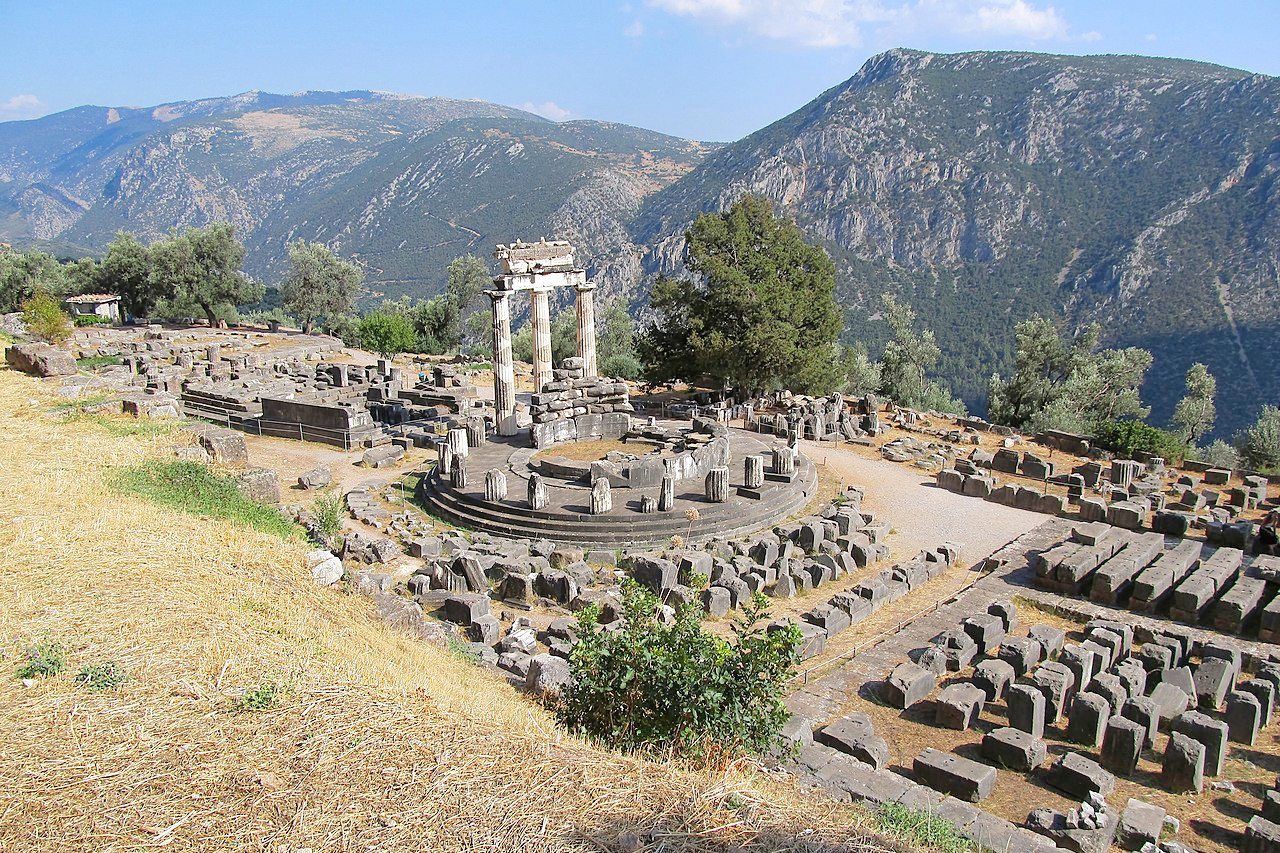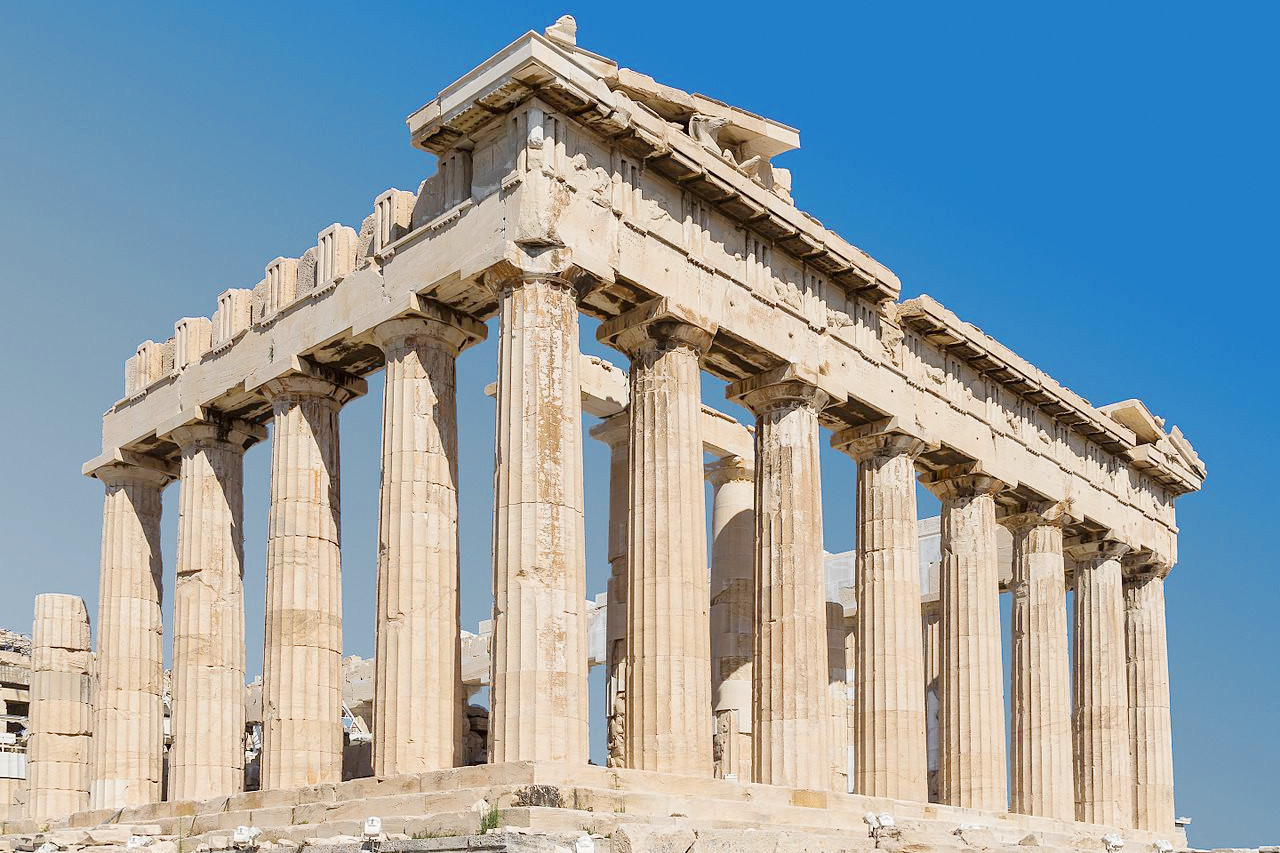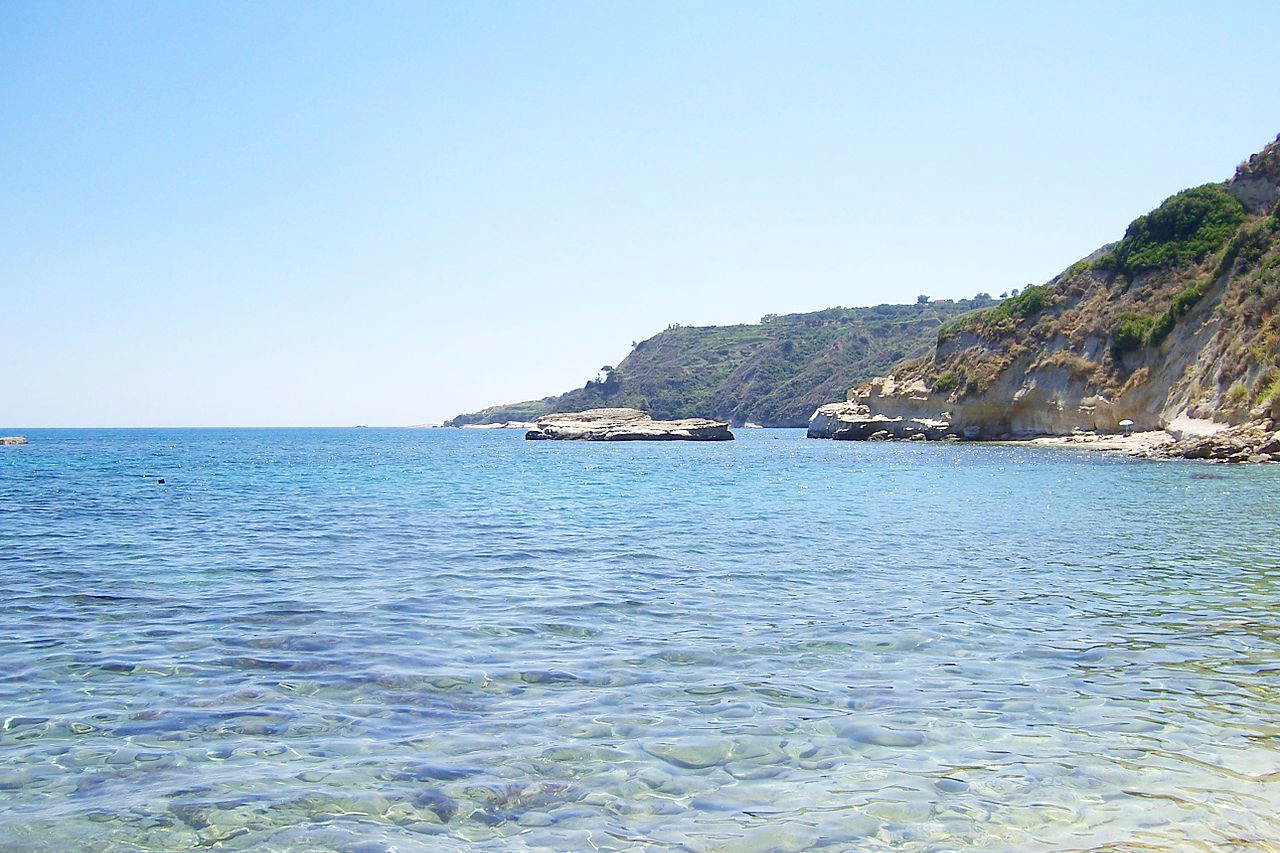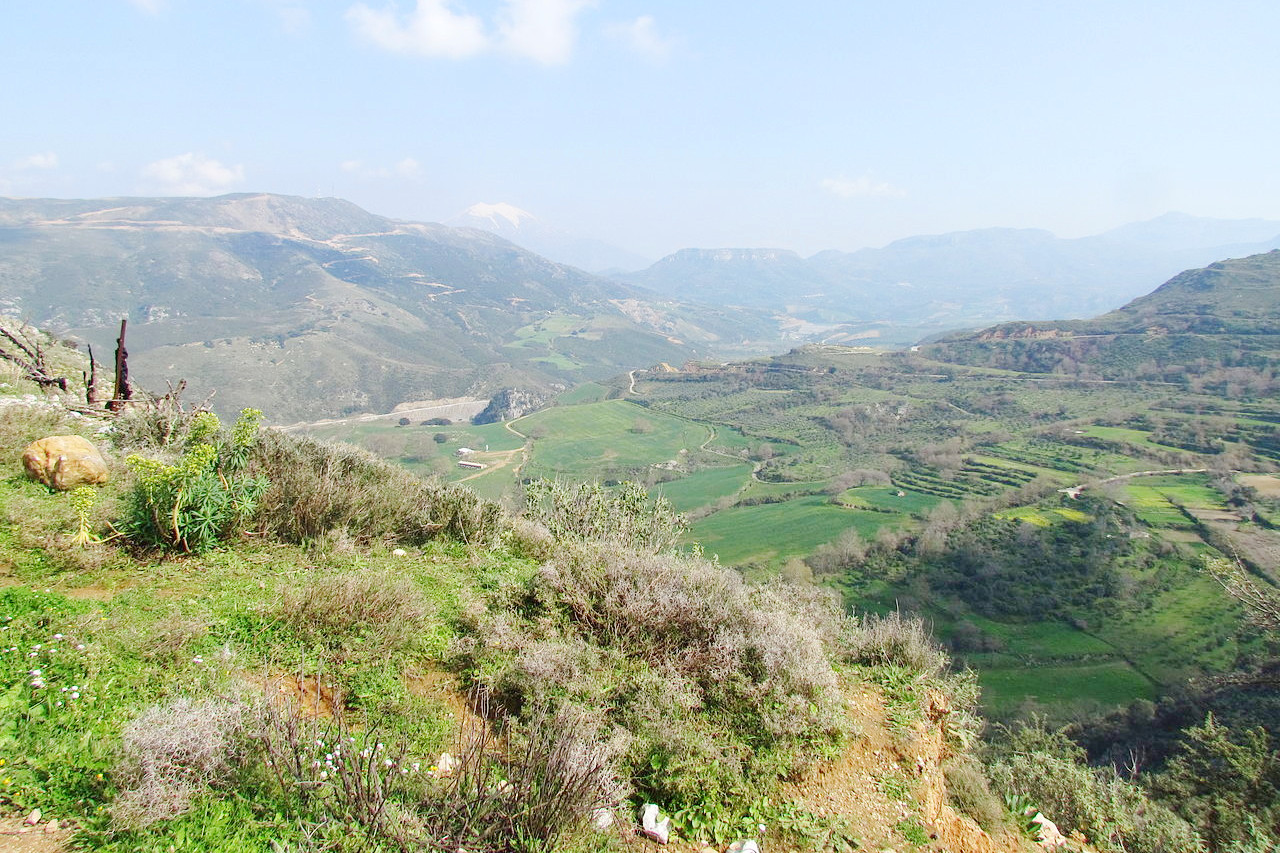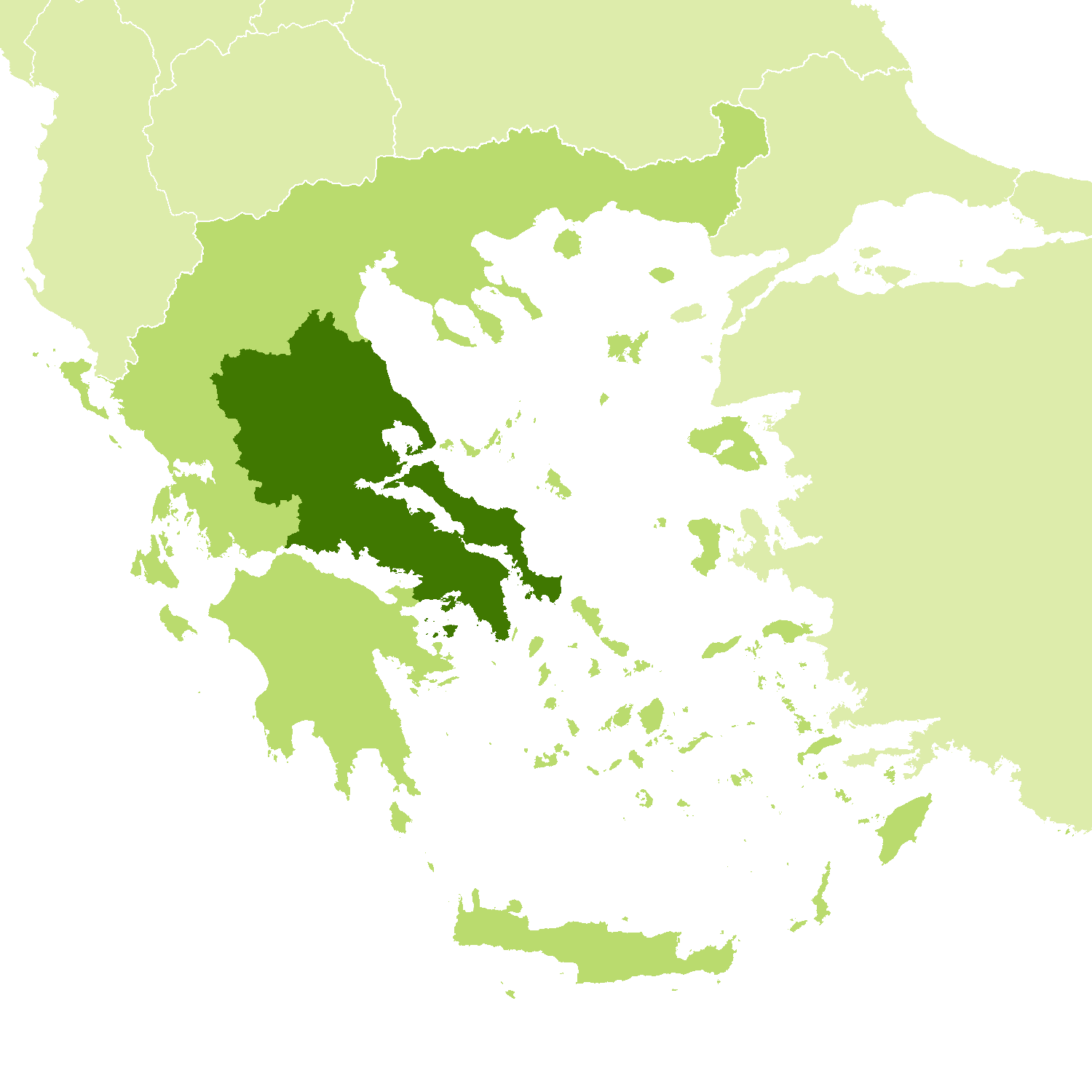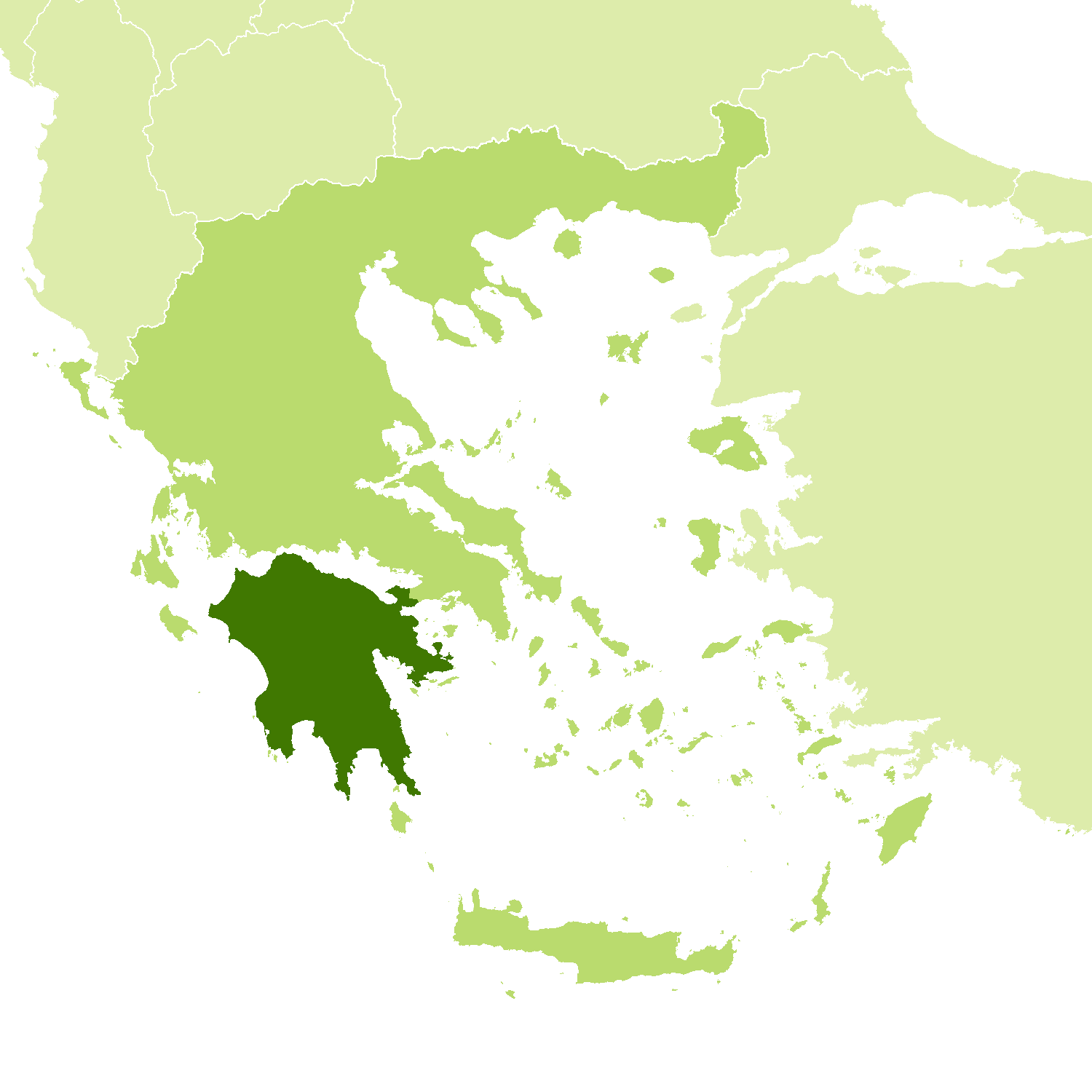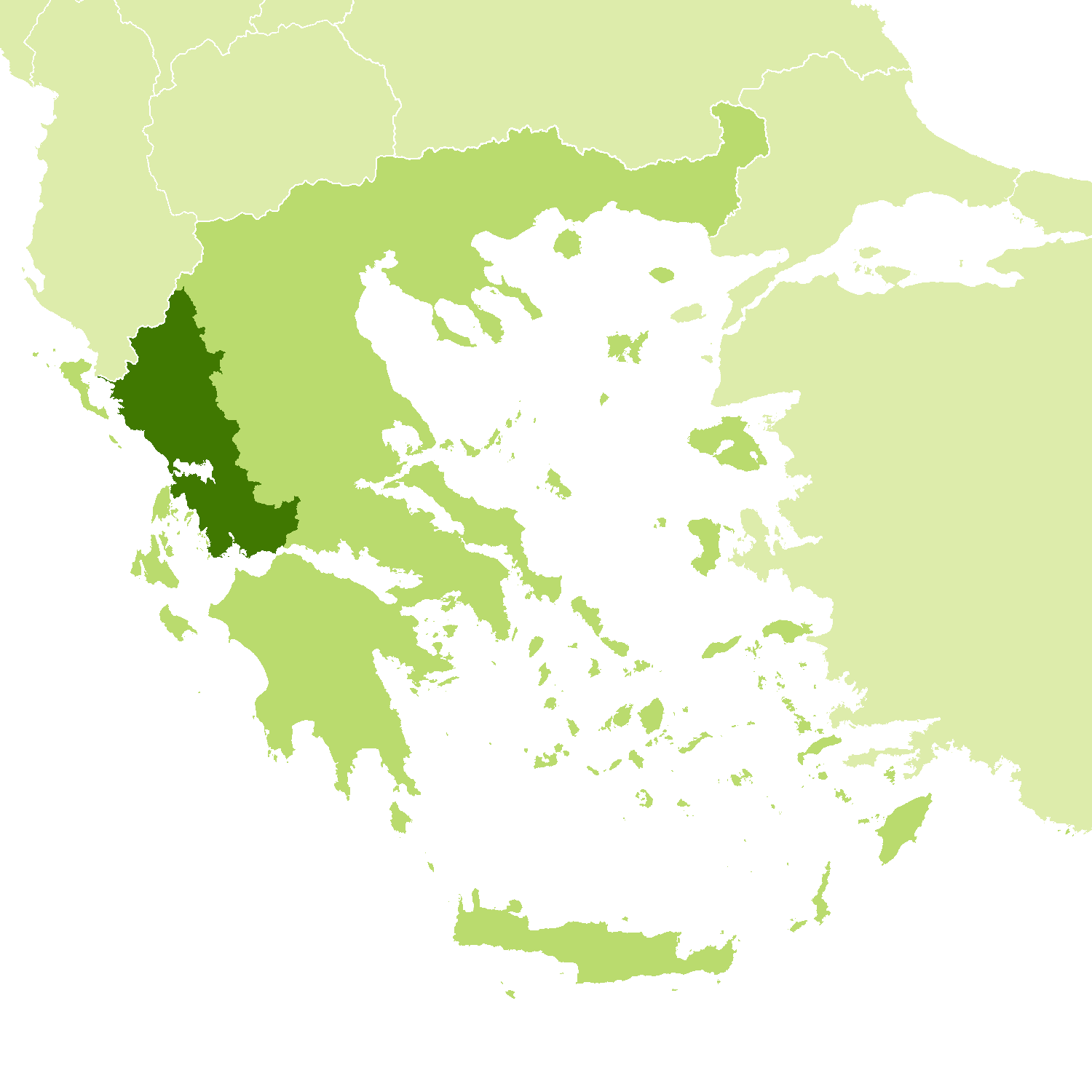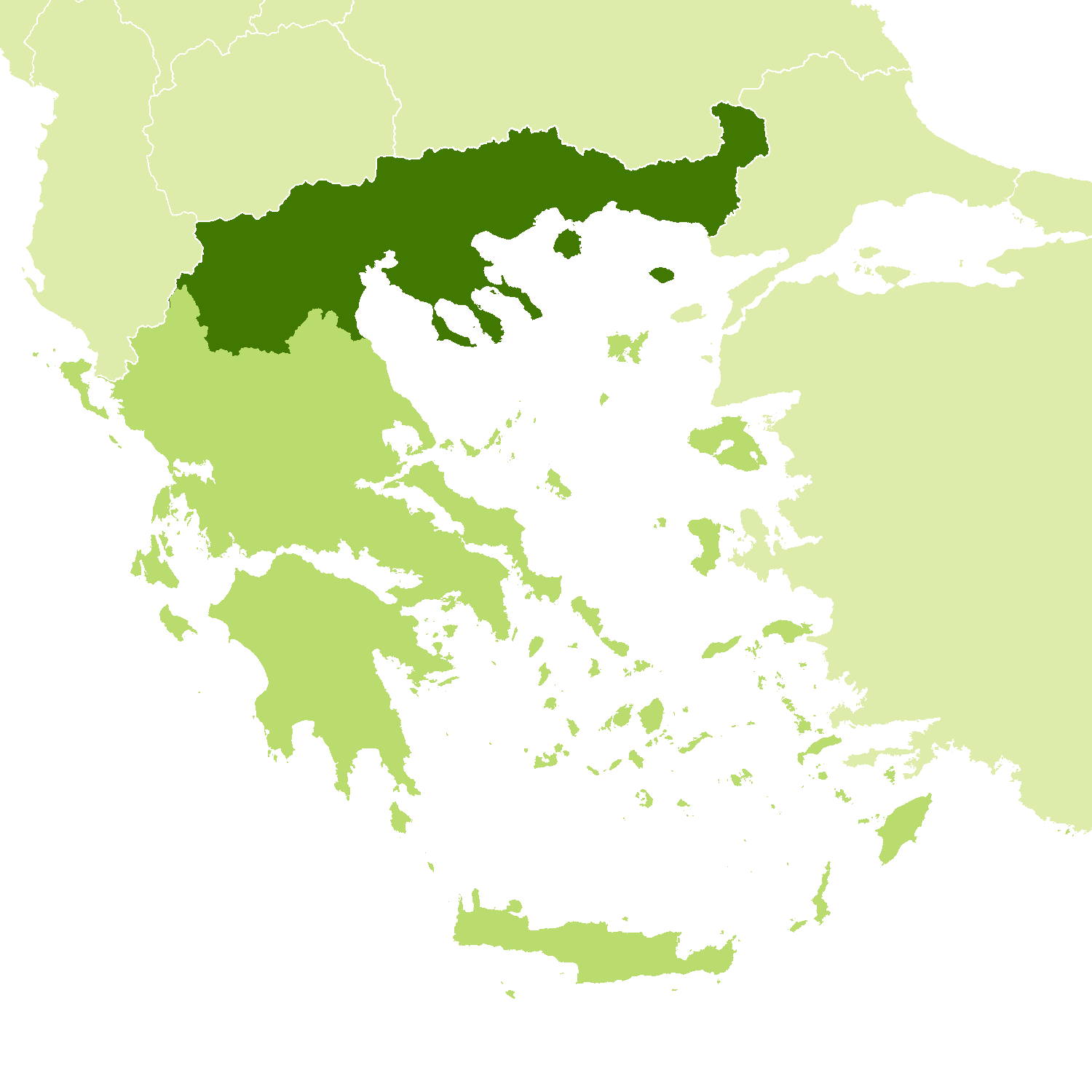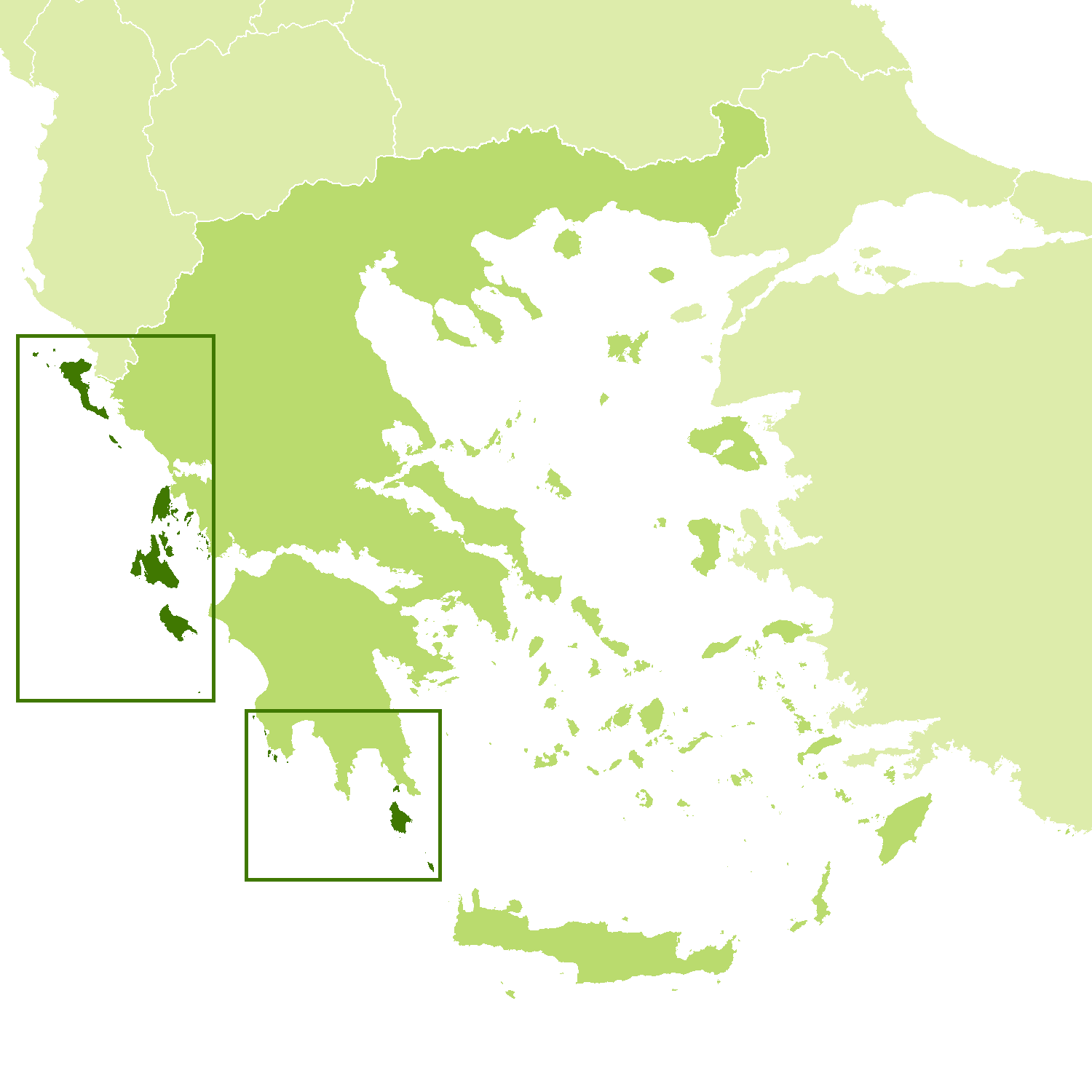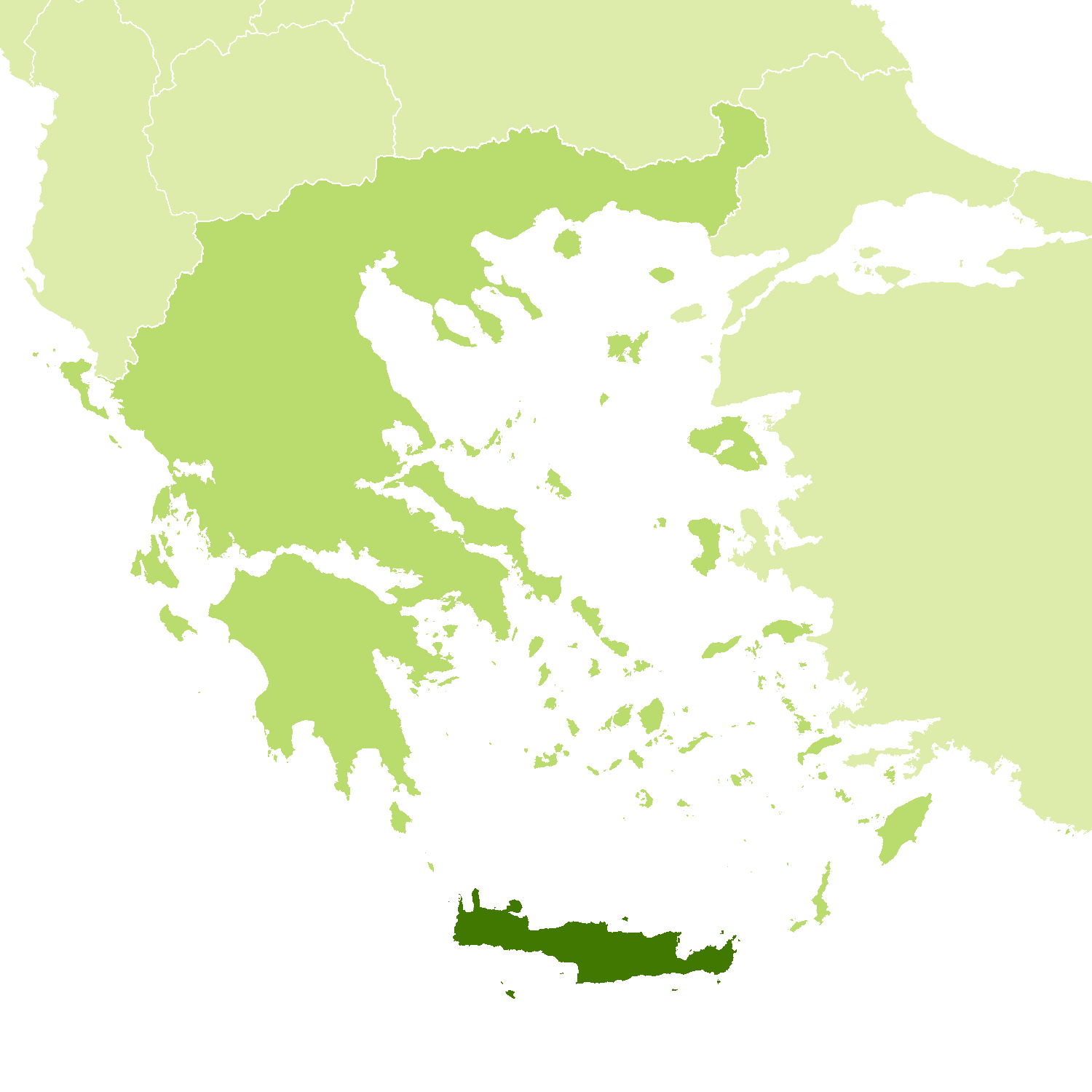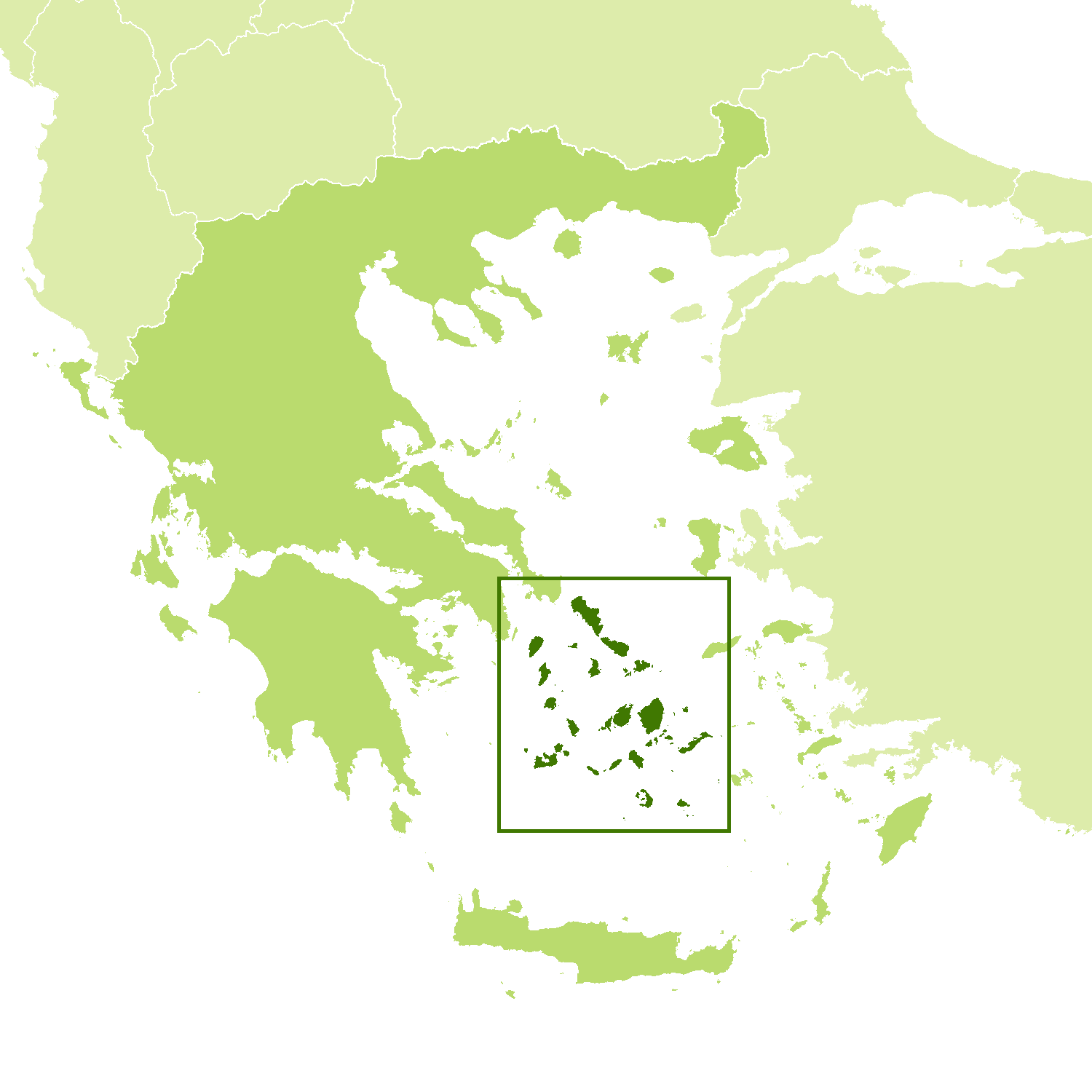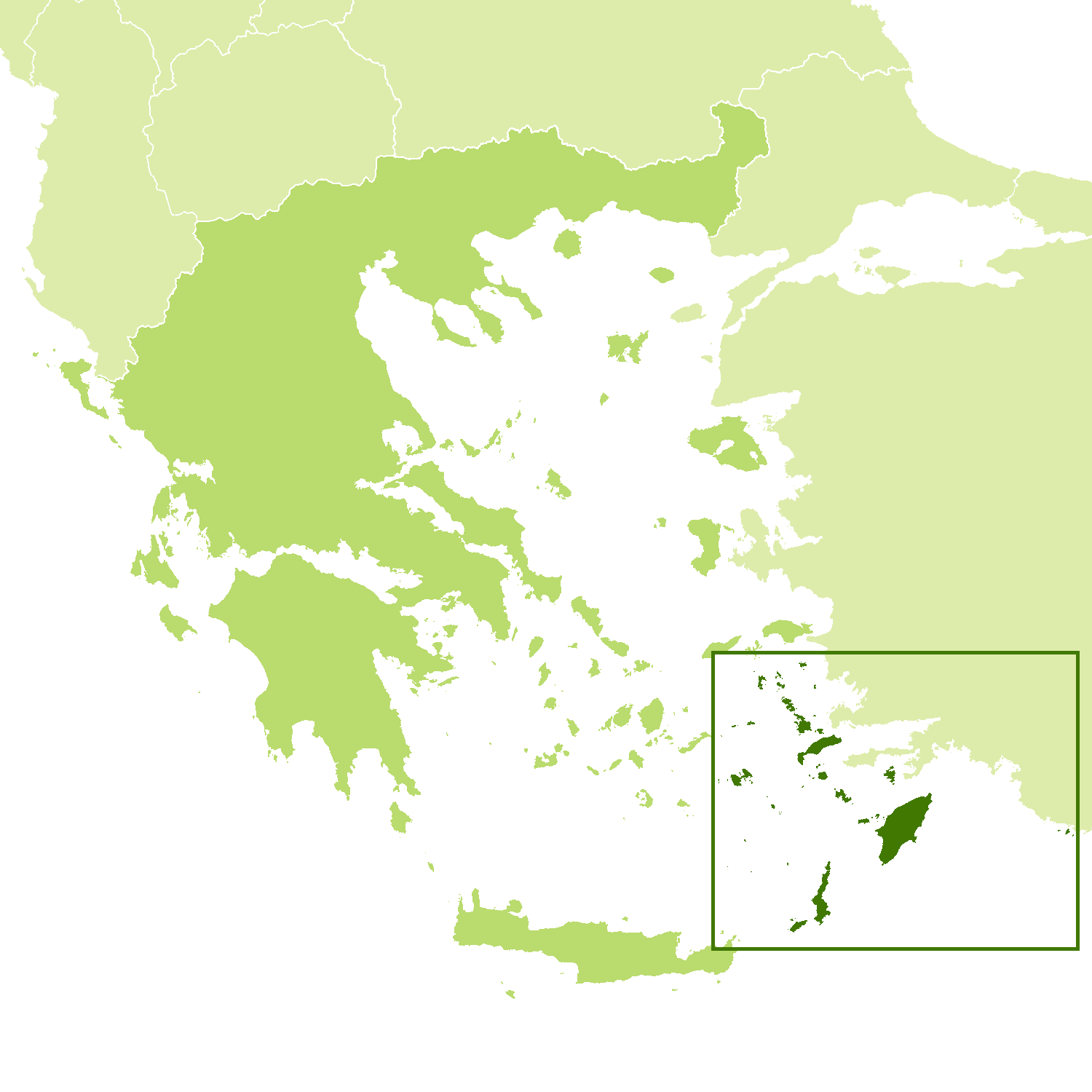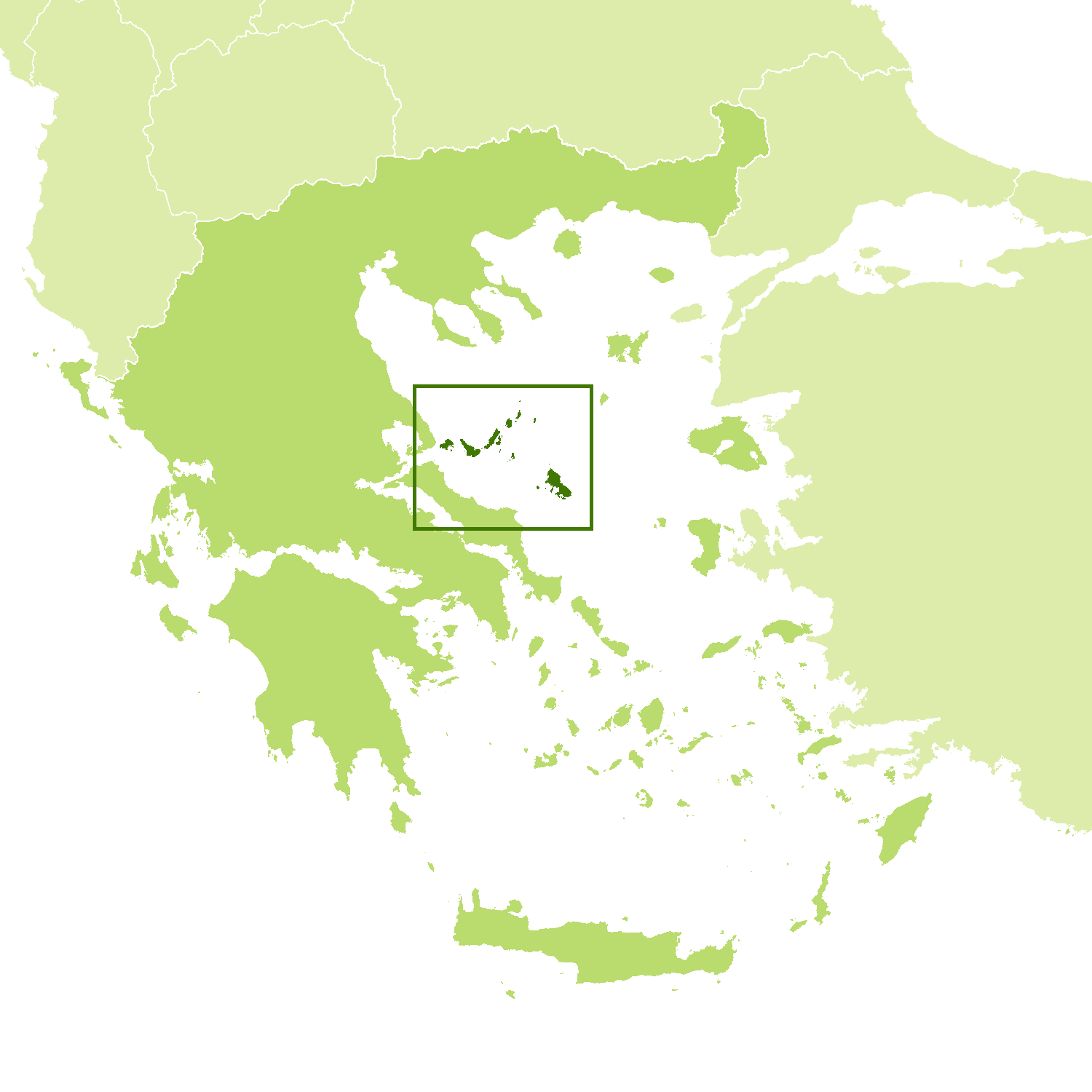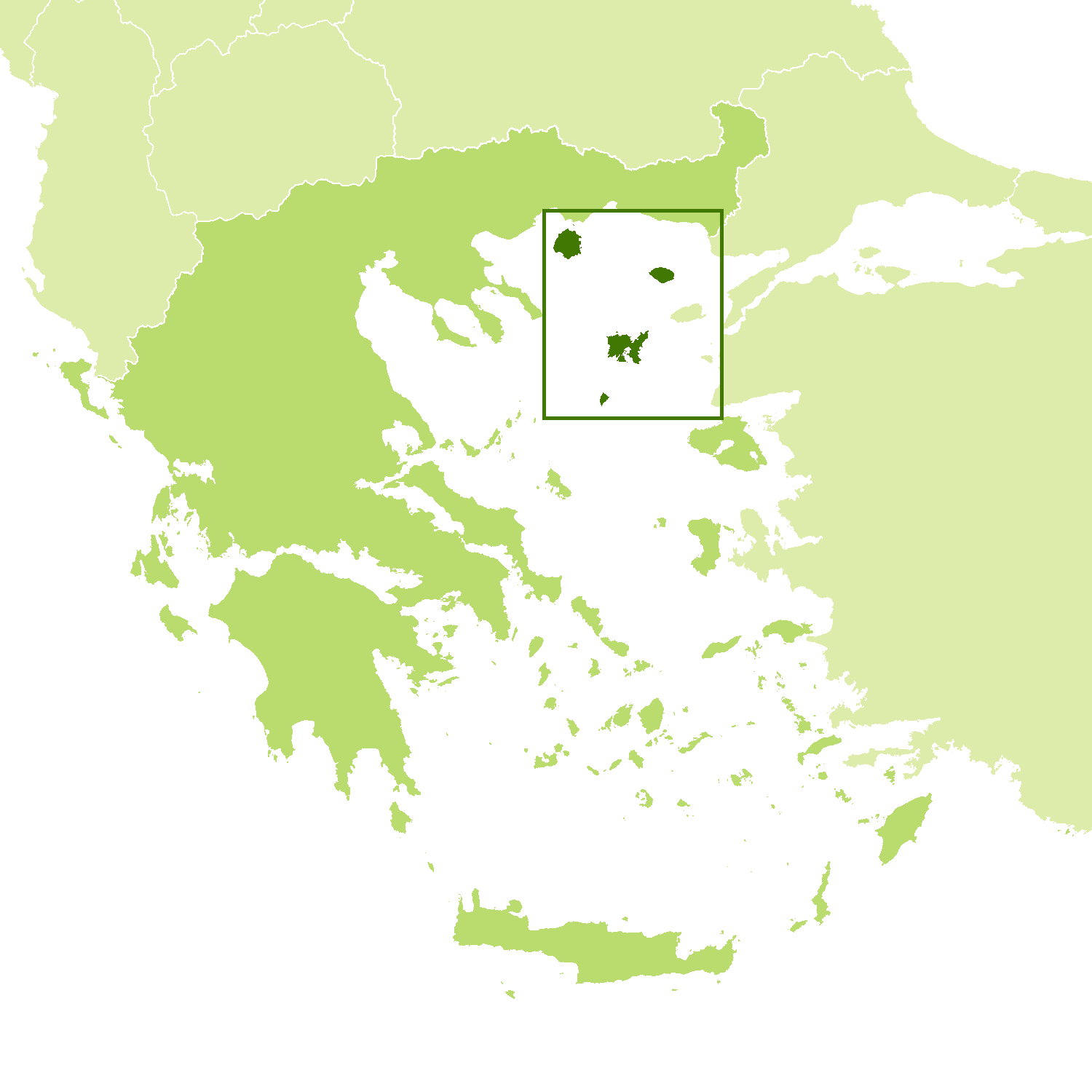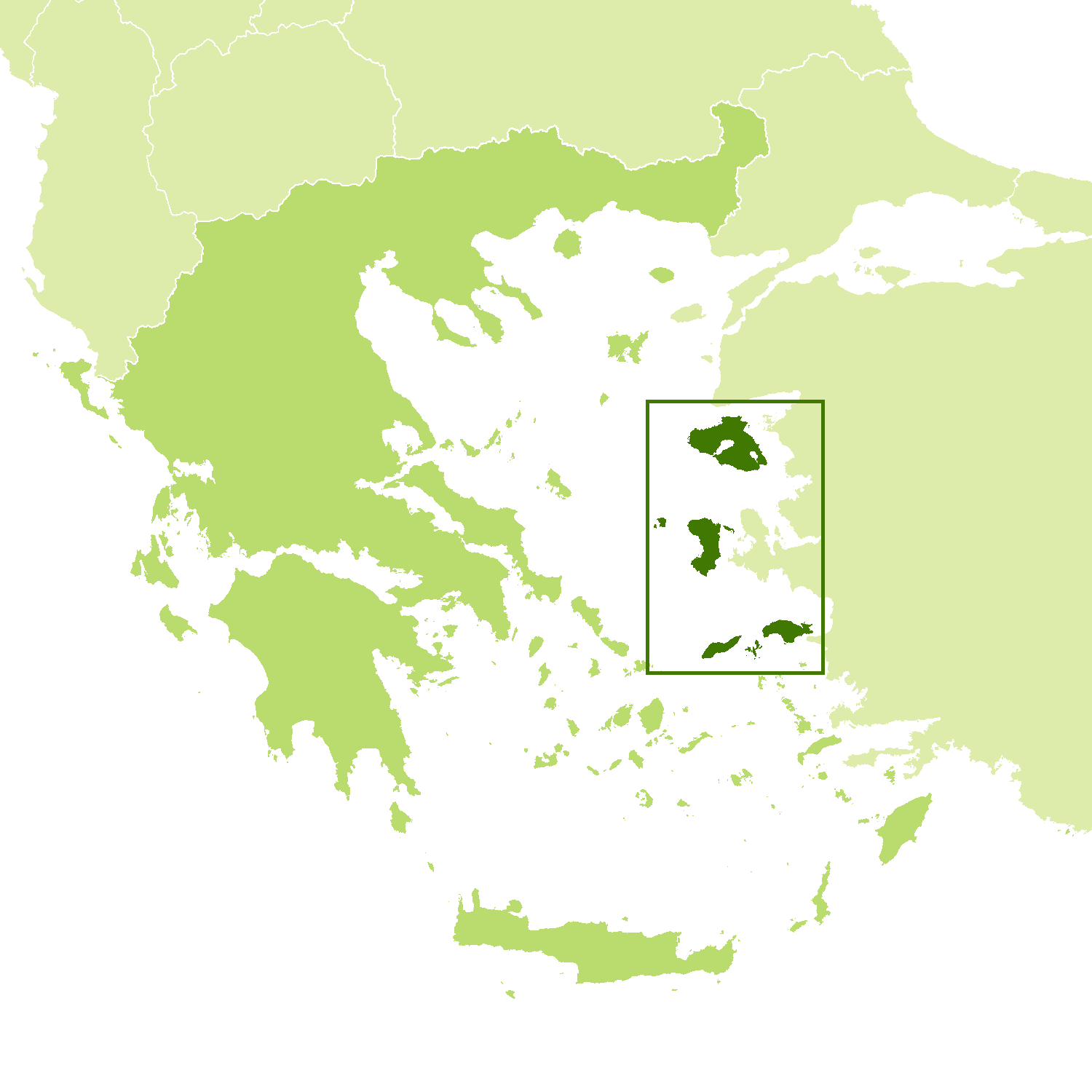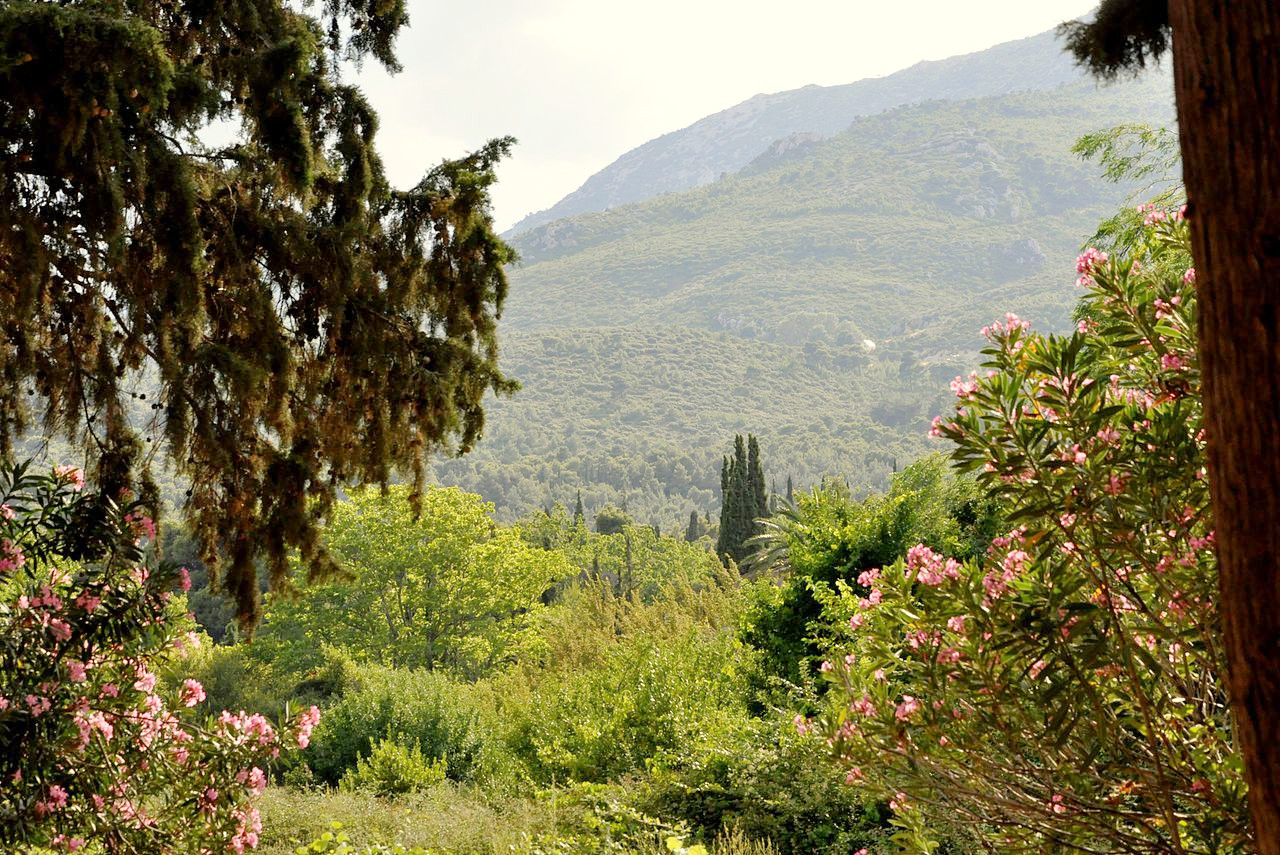The Geography of
Greece
Why visit Greece?
For the historian, the archeologist, and the nature lover, there is no other country like Greece. Since Greeks are naturally unselfish and friendly, they give visitors a warm welcome to their sunny country of great beauty and heroic legends. Apart from its world-famous historical and archaeological relics, modern Greece lavishes many attractions on the traveler. The many islands and indented coastline, so characteristic of Greece, provide ideal beaches and harbors. For those who prefer the mountains and the inlands to the sea, for the mountain-climber and the hiker, there is a vast wealth and variety of beautiful scenery richly scattered with relics of the Golden Age.
Map
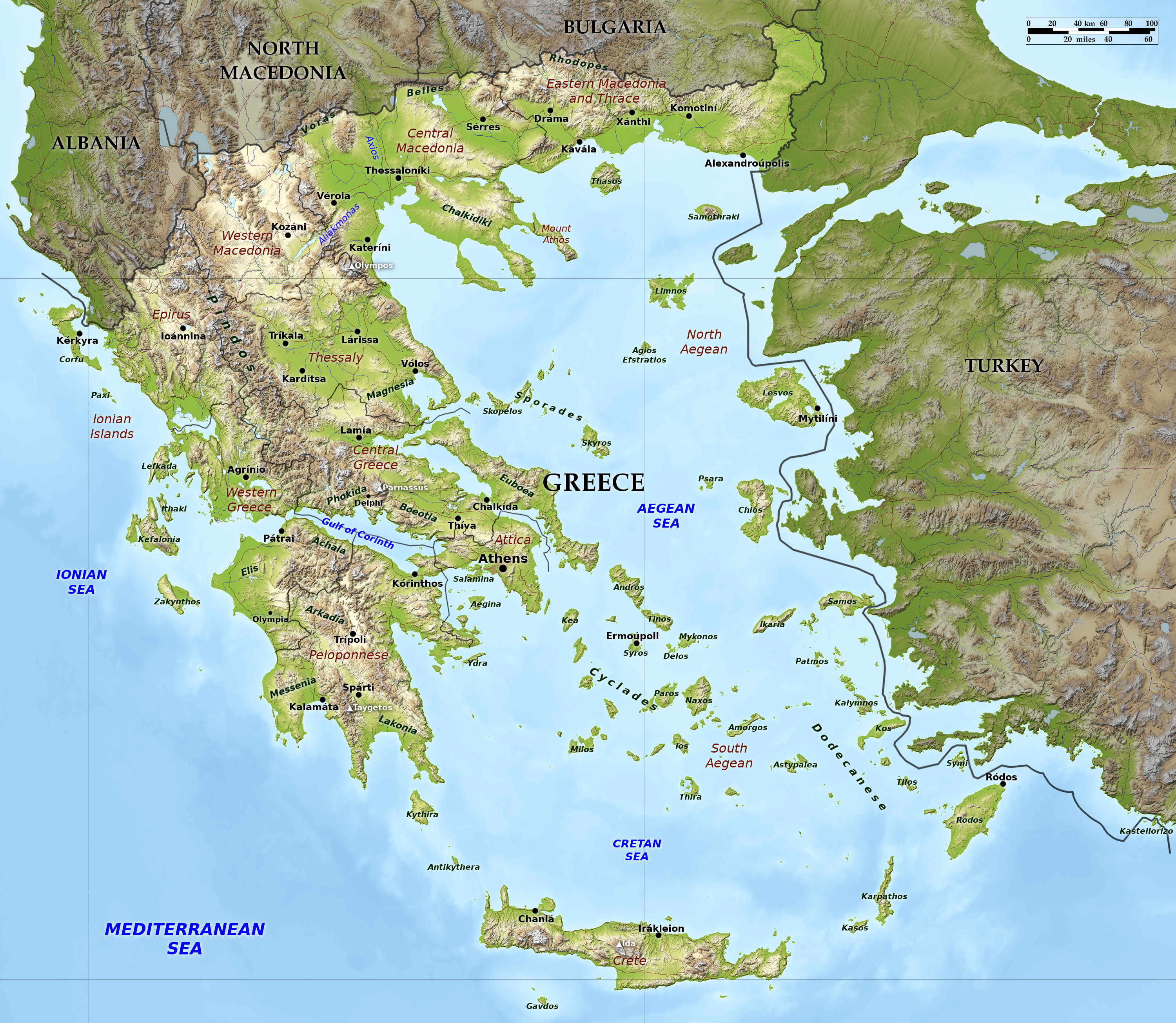 Relief map of Greece
Relief map of Greece
What is the landscape of Greece like?
The complexity of the natural landscape surpasses every country in Europe. The broken character of its coast-line is unique: except for a few districts on the northern border, no part of the country is more than 100 miles from the sea. The mainland is penetrated by numerous gulfs and inlets, and the adjoining seas are studded with islands.
Mainland Greece
Mainland Greece is a land dominated by a long and intricate coastline and a mountainous interior. The mountains are not particularly high—Olympus, the highest, is below 3,000 meters (10,000 feet)—but they occupy most of the land. In the west and north-west, they are largely covered with forest. Towards the coast and in the folds of the mountains are the plains, small in area, though some of them are remarkably fertile. In long stretches of the coast the mountains slope steeply down to the sea.
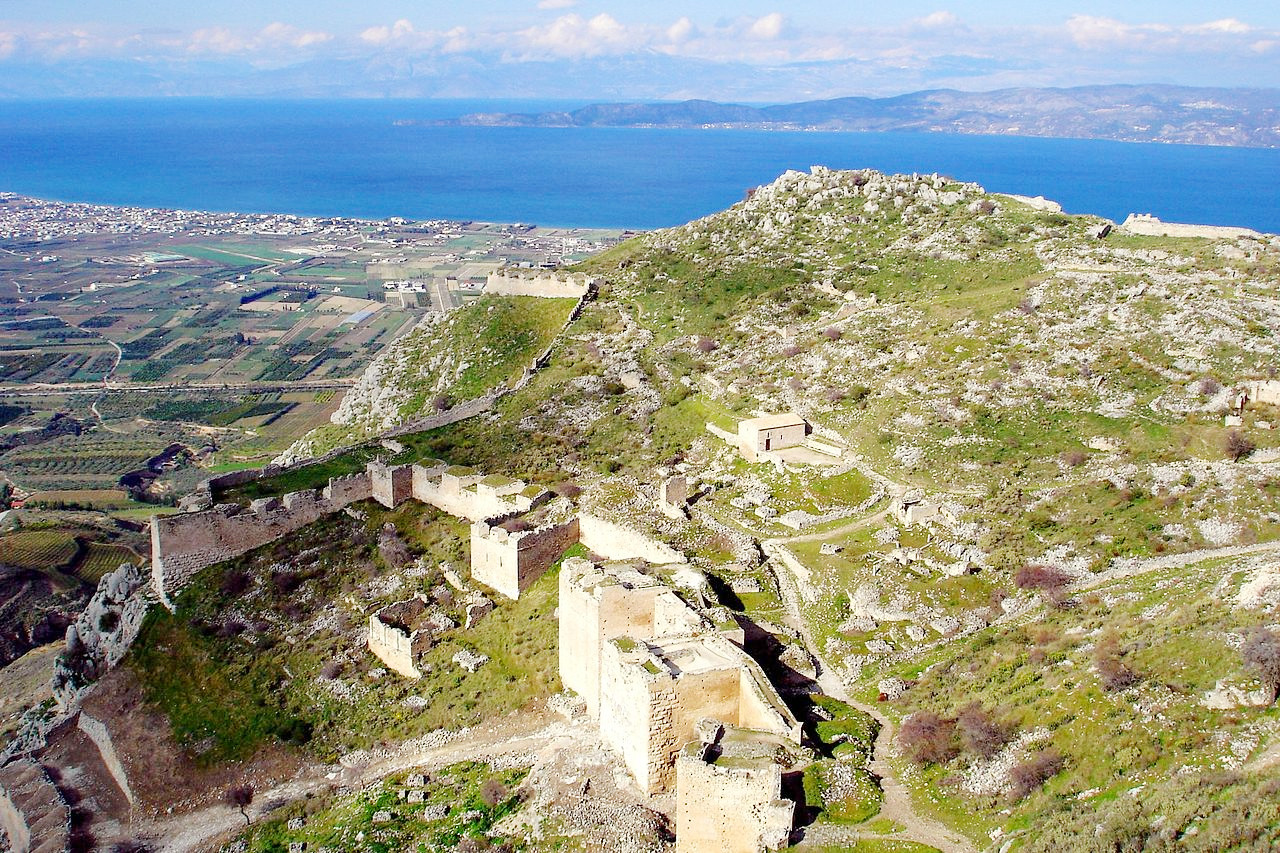 View from the Acrocorinth, looking north
View from the Acrocorinth, looking north
The Greek islands
The Greek islands have an extraordinary variety, no island is like another. In the west, the Ionian Islands of Corfu, Zakynthos and Zakynthos are as fertile as one could desire; in the Northern Aegean Lemnos and Thasos have some of the wildness of Thrace; Lesvos, with its woods and lush grass shows that it is a land of trees; Thira is an old volcano into which the sea has burst; south and separate lies Crete between Europe and Africa.
What is the nature of Greece like?
Greece has most of the characteristic plants of the Mediterranean, but in the north and in mountainous regions, they are often found juxtaposed with those of central Europe. In the lowlands, oranges, olives, dates, almonds, pomegranates, figs and vines flourish. The palm thrives in the southern Peloponnese, and finds a home in many places further north such as Attica. Around rivers are found the aurel, myrtle, oleander and mastic, together with the plane and white poplar; the cypress is often a natural feature in the landscape, and there are many aromatic plants.
Trees from more northerly latitudes find a place at higher altitudes: from 500 to 1,000 meters (1,650 to 3,300 feet) are found the oak, chestnut, beech, ash, plane, poplar and walnut, whereas from 1,000 to 1,500 meters (3,300 to 5,000 feet), the beech is the characteristic forest tree, and conifers include the Greek fir, Stone pine, and the Aleppo pine. Magnificent forests clothe the slopes of Pindus and the Rhodopes. Above 1,600 meters (5,500 feet) is an Alpine region, marked by small plants, lichens and mosses.
During the short period of spring anemones and other wild flowers enrich the hillsides with magnificent colouring; in June all color disappears except in the watered districts and high plateaus. The asphodel grows abundantly in the dry rocky soil; aloes, planted in rows, form impenetrable hedges.
What is the climate of Greece like?
See our main article: The Climate of Greece
The climate of Greece can show greater extremes of heat and cold than in Spain and Italy. Greece is exposed to the cold winds from the snow hills on the north, and to the hot sirocco from the sands of Africa on the south. Similarly in passing from mountain to the seashore, one can travel, in a short journey, from winter to spring and from spring to summer. The spring is short; the sun is already powerful in March, but the increasing warmth is often checked by cold northerly winds; but when southerly wind prevails the temperature rises rapidly. The great heat of summer is tempered throughout the islands by the Etesian winds, which often blow from the northeast. In October snow reappears on the higher mountains, remaining on the summits till June. The winter is mild, and even in January there are, as a rule, many warm clear days; but these are interspersed with biting northerly winds and cold blasts from the mountains. Snow seldom falls in the maritime and lowland districts and frost is rare. Winters are, however, severe in the highlands, and in some of the plains of the interior which are shaded from sun and sea by high hills.
The rainfall varies greatly across the country; as a rule it is greater in the west than in the east. The wettest months are November, December and January; the driest July and August, when, except for a few thunderstorms, there is practically no rainfall.
| Climate data for Athens (1991–2020) | |||||||||||||
|---|---|---|---|---|---|---|---|---|---|---|---|---|---|
| Month | Jan | Feb | Mar | Apr | May | Jun | Jul | Aug | Sep | Oct | Nov | Dec | Year |
| Average high °C (°F) | 13.3 (55.9) | 14.2 (57.6) | 17.0 (62.6) | 21.1 (70.0) | 26.5 (79.7) | 31.6 (88.9) | 34.3 (93.7) | 34.3 (93.7) | 29.6 (85.3) | 24.4 (75.9) | 18.9 (66.0) | 14.4 (57.9) | 23.3 (73.9) |
| Daily mean °C (°F) | 10.2 (50.4) | 10.8 (51.4) | 13.1 (55.6) | 16.7 (62.1) | 21.8 (71.2) | 26.6 (79.9) | 29.3 (84.7) | 29.4 (84.9) | 25.0 (77.0) | 20.3 (68.5) | 15.6 (60.1) | 11.6 (52.9) | 19.2 (66.6) |
| Average low °C (°F) | 7.1 (44.8) | 7.3 (45.1) | 9.2 (48.6) | 12.3 (54.1) | 17.0 (62.6) | 21.6 (70.9) | 24.2 (75.6) | 24.4 (75.9) | 20.4 (68.7) | 16.2 (61.2) | 12.2 (54.0) | 8.7 (47.7) | 15.0 (59.0) |
| Average rainfall mm (inches) | 55.6 (2.19) | 44.4 (1.75) | 45.6 (1.80) | 27.6 (1.09) | 20.7 (0.81) | 11.6 (0.46) | 10.7 (0.42) | 5.4 (0.21) | 25.8 (1.02) | 38.6 (1.52) | 70.8 (2.79) | 76.3 (3.00) | 433.1 (17.06) |
| Source: Cosmos, National Observatory of Athens | |||||||||||||
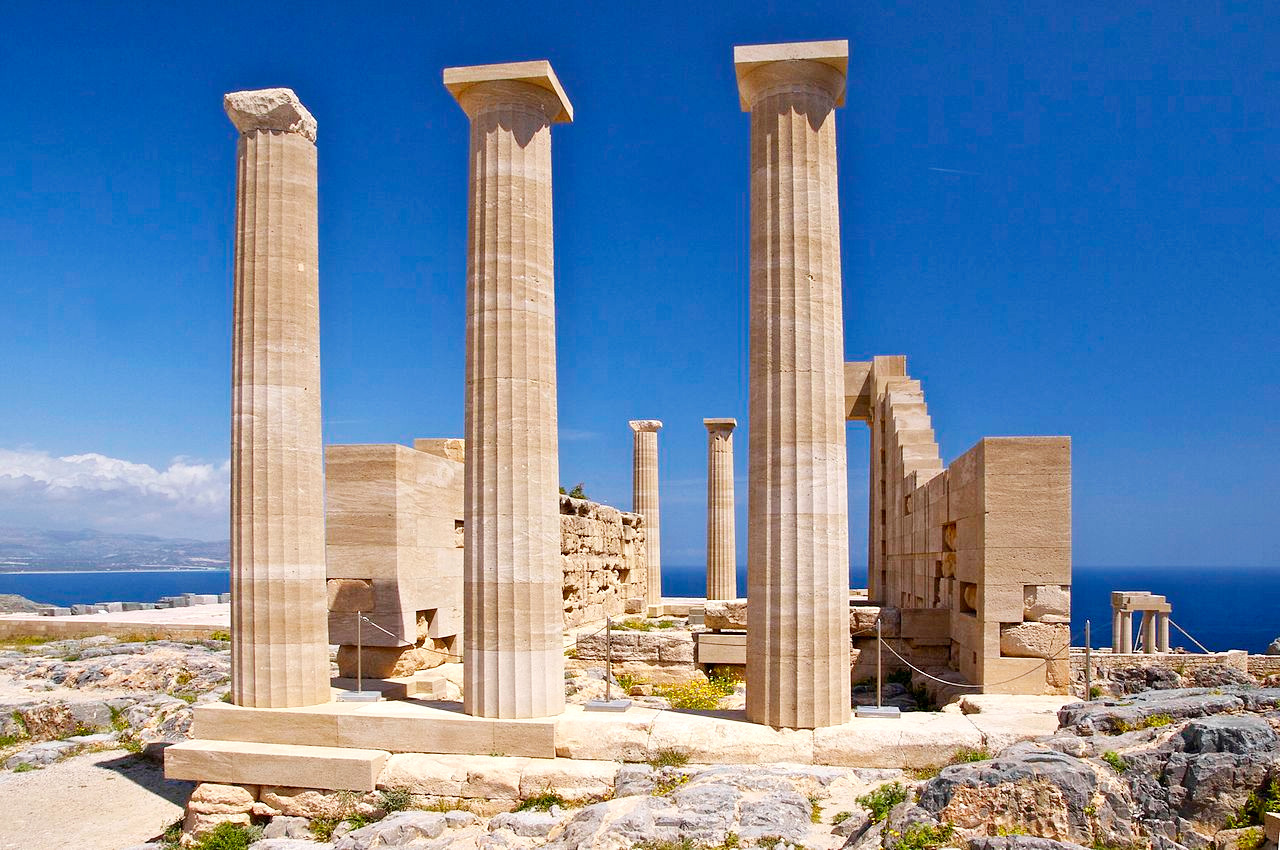 Temple of Athena Lindia, Acropolis of Lindos, Rhodes
Temple of Athena Lindia, Acropolis of Lindos, Rhodes
The official websites
Greece
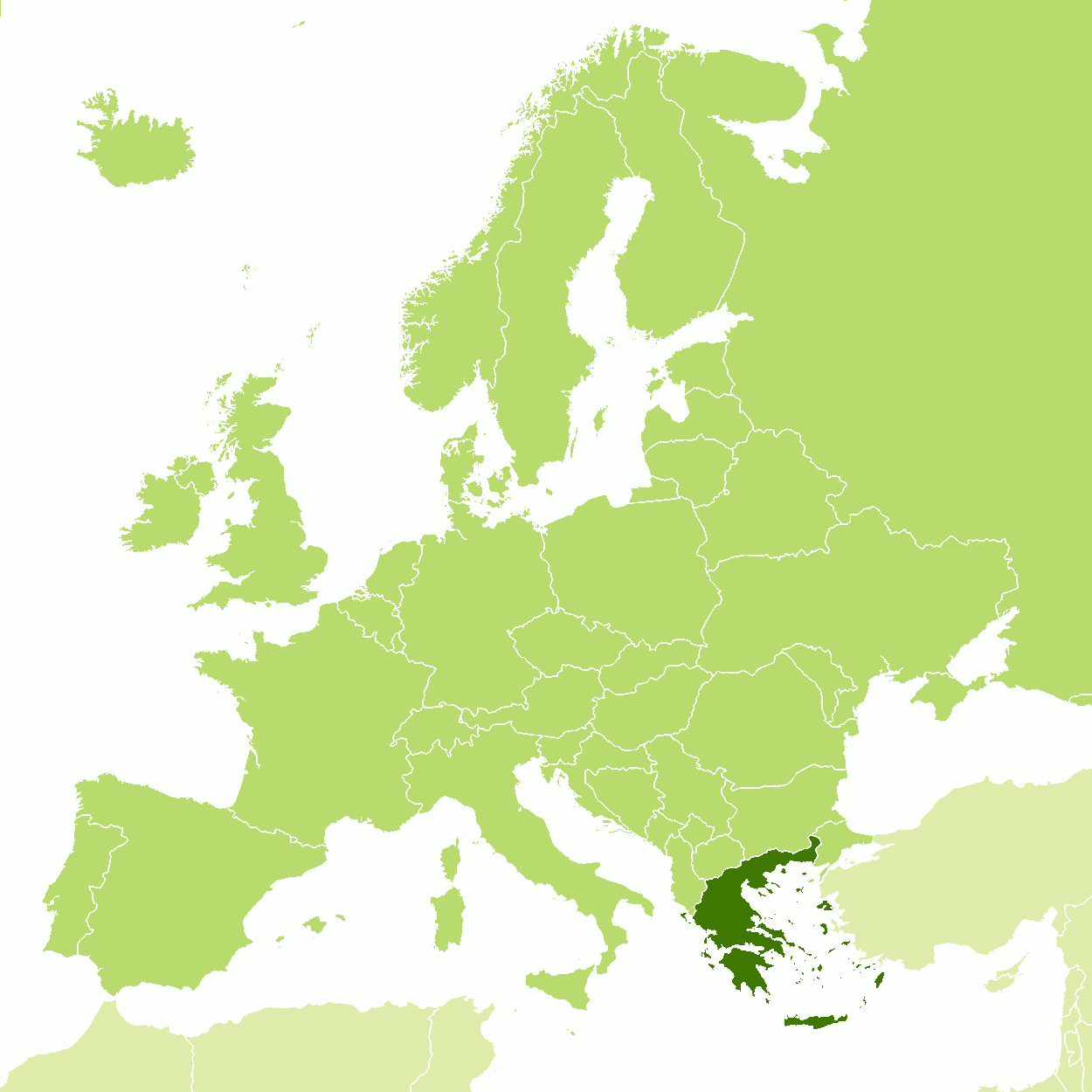
All Time Classic
| Location: | Southern Europe, bordering the Aegean Sea, Ionian Sea, and the Mediterranean Sea, between Albania and Turkey |
| Coordinates: | 39° 00′ N, 22° 00′ E |
| Size: | • 940 km N-S; 770 km E-W • 585 miles N-S; 480 miles E-W |
| Terrain: | Mountainous with ranges extending into the sea as peninsulas or chains of islands |
| Climate: | Temperate; mild, wet winters; hot, dry summers |
| Highest point: | Mount Olympus 2,917 m / 9,570 ft |
| Forest: | 30.5% (2011 est.) |
| Population: | 10,607,051 (July 2020 est.) |
| Population density: | Low (82/km²) |
| Capital: | Athens |
| Languages: | Greek (official) 99%, other 1% |
| Human Development Index: | Very high (0.888) |
| Currency: | Euro |
